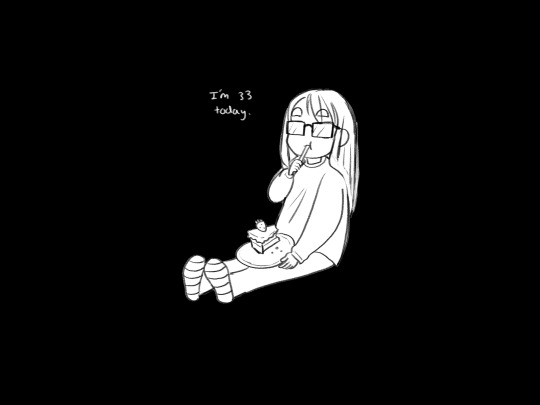#internal conflict
Text
Let's talk about internal conflict.
Having clear external conflicts is essential to driving forward your plot, but internal conflicts help add depth and complexity to your characters. They'll make your characters better rounded-out, more believable, and relatable.
Internal conflicts are the struggles, doubts, and desires that exist within a character's mind and heart. They indirectly hinder them from reaching their ultimate goal by influencing their decisions, actions, who they choose to befriend, their fears, or how they react in different situations.
Here are some ways to integrate and determine your characters' internal conflicts:
Explore their desires and fears: Figure out what goals are they striving to achieve and their motivations behind it. From here, delve into their fears and insecurities that could obstruct their progress by causing internal turmoil. This duality adds depth to their personalities and motivations.
Show conflicting emotions: Characters should experience a range of emotions, sometimes simultaneously. They may feel torn between loyalty and self-interest, love and duty, or ambition and morality. Allow these conflicting emotions to drive their decisions and actions, leading to internal tension and growth.
Develop a backstory: Every writer's favourite step. Determine how their past experiences, traumas, and relationships create internal conflict for them. Past events or unresolved issues play a key role in shaping their beliefs, values, and behavior, influencing their present-day struggles.
Use moral dilemmas: Present your characters with ethical dilemmas or moral choices that force them to confront their beliefs and values. These situations can reveal the depth of their character and provoke internal conflict as they wrestle with the consequences of their decisions, as well as providing further insight into their personality and character.
Show internal growth: Allow your characters to evolve and grow throughout the story by facing and eventually overcoming their internal conflicts. Make them struggle. Have them make bad choices out of fear, or love, or jealousy. Force them to deal with the consequences. And turn that—the confrontation of their fears, reconciliation of their desires, the difficult choices—into a transformative journey.
Hope this was helpful! Make your characters suffer ❤
#writeblr#writing#writing tips#writing advice#character development#internal conflict#deception-united
331 notes
·
View notes
Note
How do I make internal conflict subtle, without being so subtle the readers miss it?
Internal conflict is a vital component of any compelling story. It’s the central axis of any good character arc and drives the narrative forward. However, writing internal struggles effectively without resorting to heavy-handed exposition can be challenging. Here are some quick tips on writing subtle internal conflict.
Show, don’t tell
Reveal a character’s emotions through actions, thoughts, and dialogue.
Use body language and gestures to convey inner turmoil, like fidgeting, clenched fists, or avoiding eye contact.
Write sensory details to immerse readers in the character's emotional experience, like describing the taste of bitterness or the prickling of anxiety.
Incorporate changes in a character's routine or habits that hint at inner changes, like a punctual character being late, or changing taste in music.
Use the character's reactions to their environment as a reflection of their emotions. The same setting might appear grey and dark to one, but bright and vibrant to another.
Use subtext
Write subtext into dialogue, where characters say one thing but mean another.
Drop subtle hints at emotions that readers can infer rather than spelling everything out.
Experiment with non-verbal communication like meaningful glances, pauses, or hesitations.
Invoke subtext through characters' internal thoughts and uncertainties, without the character fully acknowledging their deeper feelings.
Use dramatic irony, where the reader knows more than the character does about their own feelings or situation.
Develop complex characters
Give your characters conflicting desires, values, and goals to naturally generate internal conflict.
Create backstories that reveal past traumas or experiences that continue to haunt and influence their decisions.
Consider using character flaws and contradictions to highlight internal struggles.
Use relationships to create conflicting desires and expectations.
Give your characters both internal and external conflicts to build tension between dealing with personal struggles and outside problems.
Employ inner monologues
Incorporate introspective moments where characters wrestle with their inner demons, doubts, and fears.
Use first-person or close third-person perspectives to allow readers direct access to the character's thoughts.
Balance inner monologues with external action to maintain pacing and engagement.
Use an unreliable narrator so readers try to distinguish between what is a misperception and what is the truth.
Create inner thoughts that highlight the difference between a character's public persona and their private world.
Create moral dilemmas
Force characters to make difficult decisions that represent turning points in their arcs.
Explore the consequences of a character’s choices on their sense of self and their relationships.
Have your character confront a personal sacrifice where they must question their own motives and values.
Have a character balance loyalty and personal integrity, having to decide where their personal morality lies.
Force a choice between self-preservation and the greater good where their choice not only has personal stakes, but story-wide ones as well.
#writers#creative writing#writing#writing community#writers of tumblr#creative writers#writing inspiration#writeblr#writerblr#writing tips#writblr#writers corner#writers block#references for writers#writing reference#writing advice#character development#internal conflict#writing internal conflict#resources for writers#writing resources#writing help#help for writers#helping writers#advice for authors#writing tips and tricks#writing quick tips#quick tips for writers#character arcs#how to write
884 notes
·
View notes
Text
7 Types of Internal Conflict for Your Protagonist
External conflict can always make readers more interested in a story. The fist fights, car chases, and fictional battles might make them hold their breath, but so can internal conflict. Check out the primary types of internal conflict your protagonist can experience to add more depth to your stories.
1. Morality Conflicts
Everyone eventually reaches a point where they question their morals. We have to believe in our morals as individuals to prioritize them. It’s not enough to have your parents or other leaders in your life tell you what’s right and wrong. You won’t hold the same morals until you choose them on your own.
Characters also reach these crucial points. It’s part of their character development like it’s part of our personal development.
Your protagonist may only grapple with one question of morality in your story or they could encounter many. The morals will most likely align with your theme so they make sense within your plot.
Example: Your protagonist is a scientific researcher and leading a trial that could result in a cure for a new illness. They know they shouldn’t take bribes and wouldn’t compromise their career, but someone who nearly qualifies for their trial offers a life-changing amount of money to get included even though they’ve already been ruled out.
The protagonist has to choose—do they stick with what they trust is morally correct or do they take the money and use it to help pay for a family member’s legal battle in criminal court? Do they view it as potentially saving two lives at once? Or do they reject the bribe and face whatever consequences could have possibly been avoided?
2. Self-Identity Conflicts
Your identity is something that morphs with time. People rarely settle on one version of themselves forever. Life makes us reconsider things from different perspectives as we go through periods of challenges and peace. Characters also grapple with their identities when faced with similar situations. It makes them take a stand, hold their ground, or chase new goals, which is much more interesting for readers.
Example: Your protagonist considers themselves an optimist because they’re a firefighter who has saved many lives. When they realize their chief has been starting all the fires their station ever fought, your protagonist begins to view people more pessimistically. It affects how quickly they’re willing to risk their life for others, which results in challenges and a character arc they wouldn’t have experienced without this fundamental change in their identity.
3. Religious Belief Conflicts
It’s much easier to stay firm in your religious beliefs if nothing challenges them. If a challenge or major question arises and your beliefs hold firm, that makes your identity stronger. It doesn’t always happen that way though.
When your protagonist faces this type of internal conflict and realizes their opinions or feelings contradict their religious beliefs, it can take them onto a path that shapes a new identity. These choices are hard but real. Readers who are going through the same experience or experienced the same questions before will get absorbed by your story because it’s relatable.
Example: Your protagonist attends a religious gathering every week. The group fundamentally believes their religion exists to help those in need. Prejudices begin to invade that group, so people start choosing their own well-being instead of helping others.
Your protagonist watches their religious family pick sides and has to question if they really believe in helping others or if they choose the familiarity and safety that comes with the approval of their longtime religious family.
4. Societal Role Conflicts
Societies have predetermined roles or expectations for people based on factors like their gender, sex, and economic status (just to name a few). Sometimes these roles feel natural to people and other times they don’t. We all have to decide what feels best for us on an ongoing basis. Your protagonist may need to choose their societal role, reject it, or shape a new one to portray your theme in a relatable way.
Example: Your protagonist goes to a university for the first time. They’ve been encouraged by everyone they know to start forming a large friend group. That’s what people are supposed to do in college, their loved ones said. But your protagonist is an introvert and values only a few friendships at a time. They have to choose if they’ll push themselves to become a social butterfly or if they’re happier as the person they’ve always been.
5. Political Opinion Conflicts
Political opinions can create all types of internal conflict. You may believe in a certain candidate or party during one part of your life and support something completely different in another part. Those values change as we experience new things and meet new people. Characters can face the same internal struggles as they recognize changing values or reject opportunities for change.
Example: Your protagonist may have never formed strong political opinions. They meet a new person who becomes their best friend, but their government starts passing laws that make their best friend’s life much harder because they’re part of a marginalized community your protagonist hasn’t empathized with before.
Your protagonist now cares for that community, so they have to decide if they’ll make different political choices that could ostracize them from the community they’ve been part of all their life.
6. Love Conflicts
There are numerous types of love—self-love, your love for your family, and your love of a potential romantic interest or current partner. These come into conflicts in stories all the time because people experience them every day.
The conflicts result in choices—does your protagonist choose to continue loving a specific person or do they fall out of love? Do they fight for that love or realize it never actually existed? These are just a few ways this inner conflict can play out.
Example: Your protagonist has three siblings. They’d give their life for their siblings because they’ve lived in an emotional and physical home environment that’s been unsafe all of their lives. However, your protagonist is also the oldest child who has to leave home when they’re 18.
They have to decide how to best love their siblings—do they leave them at home with a parent who is a threat to their safety so your protagonist can achieve an education or job that pays enough to create a new home for them? Do they get the legal system involved? Do they get their siblings and run away together since your protagonist is now old enough to lease an apartment, pay bills, etc?
7. Personal Journey Conflict
Existential crises make characters come to life by breaking their identity apart. These moments are unfortunately a real part of life, so readers want them in their books to help them cope, understand the changes, and generally feel not alone in their hardships.
This internal conflict happens when we question why we’re in this world or what we’re supposed to do with our lives. Sometimes there’s a clear answer after we start searching for it, but other times there isn’t. How your protagonist’s internal journey to a new purpose unfolds depends on your theme and plot.
Example: Your protagonist spent their life dreaming of becoming a politician. They wanted to help people and change the world, but they lost their first three attempts at running for local office. The third loss devastated them.
If voters don’t want them as a leader, what’s their purpose? Who are they if they aren’t a leader who changes the world through effective policies? The answer may come through the plot events that follow. If they don’t get an answer, sometimes it means their purpose already exists in their life and they’re overlooking it.
-----
Reading through the basic types of internal conflict will help you shape your future protagonists. If you align your desired theme with an inner conflict, the external events in your plot will be much easier to choose. Your readers will also connect with your story better because they’ll see real problems reflected in your protagonist’s character arc.
#character development#writing characters#writing advice#character tropes#writing tips#character details#character creation#character arc#internal conflict#types of conflict#inner conflict#writeblr#writers of tumblr#writing inspiration#writing#creative writing#writing community#writing help#writing resources
587 notes
·
View notes
Text
The Deal with Character and Plot: Which is More Important?
All stories have characters and plot.
Sometimes as writers, however, we pour all our focus into one of these aspects, overshadowing plot in favor of character, or getting too caught up in plot and leaving character for last. Really, both are the nuts and bolts of story — they work in unison, thriving in tandem. Without the other, the story just falls flat. But, there’s a little something that is the glue between plot and character.
So what is this glue?
That, my friend, is conflict.
Conflict is the glue that brings together these two aspects, creating balance and making a compelling and engaging story. All good stories have conflict.
It’s helpful to remember that plot is the sequence of external events in a character’s environment that get the ball rolling, whereas character give a window to the internal, the emotional. Internal conflict is often of the character’s own making: a secret motive, a battle of emotions, the opposing want versus need, the dissatisfaction in their life, the indecisions or hesitations.
A character tends to get affected by the external events. A messy divorce may lead to one character’s depression before they finally motivate themselves to get a new date, going through multiple failed attempts until they meet their second-soulmate. A character getting a new job may catapult them into —what was supposed to be a fresh start— a waking nightmare as they try to navigate their unfair, demanding workplace.
With these two examples, we can pinpoint their internal and external conflicts. In the first, we have the character’s external conflict of a heart-breaking divorce and the struggles of moving out and getting the papers settled. As for the internal conflict, this character goes through bouts of depression, wondering if she’ll find anyone for her, before finally getting encouraged to get back out into the dating pool once again, helping her to discover that nothing is too-late or at the end of road.
For the second example, the external conflict is the character navigating their new environment, driven up the wall from tedious work and snobby coworkers, but they can’t leave because of *reasons*. Their internal conflict, in turn, is their dedication as to not quit coupled with their eventual desire to climb the ladder of success.
We can start to see here that there’s a clear cause-and-effect relationship between the external and internal: one cannot exist without the other. How a character might see the world can impact their relationships and other external factors, such as their environment. Similarly, external events can prompt a character to react or spark inner conflict that they have to deal with in one way or another.
I hope this is helpful. Thanks for reading!
#writing advice#fiction#writing#creative writing#writing tips#internal conflict#external conflict#character#plot#writing conflict
88 notes
·
View notes
Text
What Is Your OC’s Internal Conflict?
Internal conflict is key to writing a character-driven story and helping readers emotionally connect to your characters. The external conflict would be, say, the Hex Squad defeating Emperor Belos and the Emperor’s Coven, but the internal conflict would be Amity breaking away from her mother’s influence, or Willow rebuilding her self-worth after years of bullying broke it down. It relates back to their personal journey of self-growth as they conquer their inner demons rather than an external force
If it helps, feel more than free to comment or reblog to share your own characters’ internal conflicts
#internal conflict#external conflict#writing conflict#conflict#the owl house#writing#writers#writeblr#bookblr#book#writers on tumblr#writerscommunity#writers of tumblr#writer#how to write#on writing#creative writing#write#writing tips#writers and poets#writblr#female writers#writer things#writerscreed#writer problems#writing is hard#writing advice#writing life#original writing
98 notes
·
View notes
Text
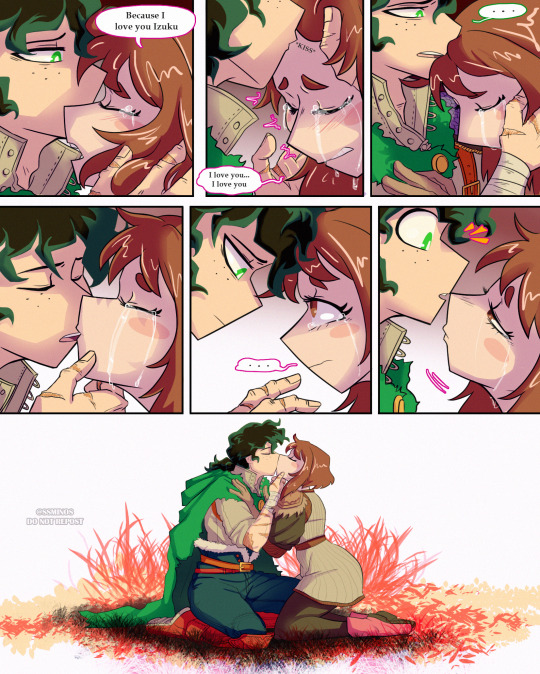
an unrequited love? maybe yes, maybe no
Izuku has problems with his own romantic feelings
#bnha#boku no hero#izuku midoriya#my hero academia#uraraka ochako#comics#medieval au#fantasy au bnha#internal conflict#izuocha#uraraka x deku#scene based on berserk
117 notes
·
View notes
Text
i want to be forgiving
i really do
i want to lead with love
and the kindness that accompanies it
but others shall not allow for it
perhaps i shall offer them love regardless.
#poetry#writing#forgiveness#internal struggles#internal conflict#writer#poet#author#art#artist#wish#literature#english literature#beauty#painting#jealousy#envy#confessional poetry#poem#short poem#poets on tumblr#writers and poets#poetic#original poem#poems on tumblr#poems#hardly a poem#religion#theology#catholicism
27 notes
·
View notes
Text
143 notes
·
View notes
Text

#artists on tumblr#ai artwork#alternative#internal conflict#inner critic#fantasy psychology#annoying bastard
9 notes
·
View notes
Text
tfw howdy is starting to become a comfort but you know all the content woth him is stuff you sorta don't like-
#internal conflict#it always makes me the most upset-#i just want to see the silly pillar cracking the dumbest jokes#and with Frank and Eddie-#like is it so much to ask to not run into a borderline thirst trap-#im probably just complaining out loud when i can make my own content#but then again#i like how some other people draw howdy#like i feel like he would root for me if i completed a puzzle#or just let me chill in his store(or maybe not)#but still#i want wholesome howdy content-#thats not beaglepillar or wallypillar-(sorry-)#(no hate to the ships i just personally don't ship them)#i could argue with myself all day in the tags-#welcome home
27 notes
·
View notes
Text
Character Analysis: Bakugou Katsuki. Part 3
As always: Disclaimer: This is for fun. I am not a professional psychiatrist, nor claim to be. These are my thoughts and opinions. If you do not agree, thank you for at least reading, but DO NOT comment!
——
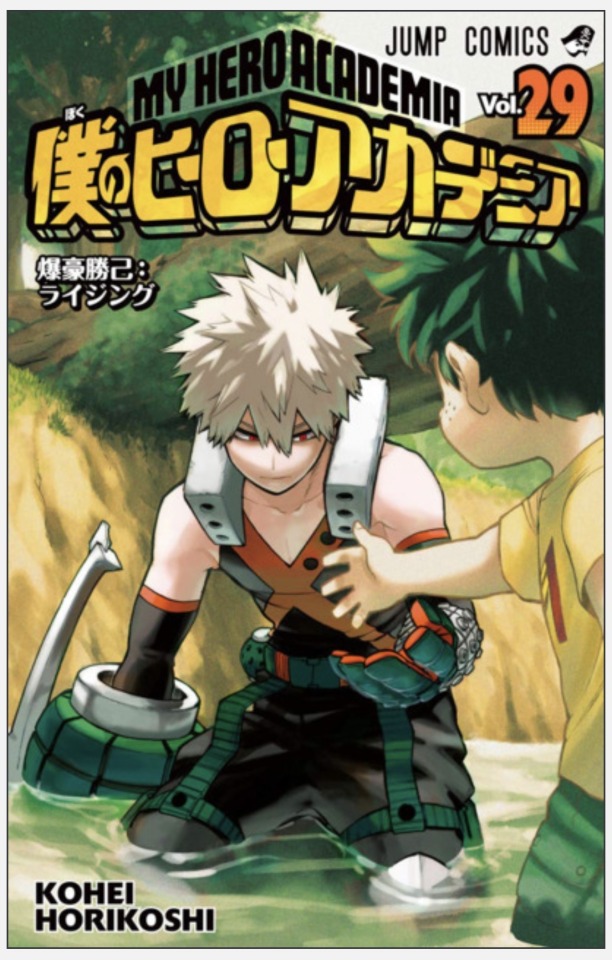
Bakugo Katsuki acceptance.

This layout interesting. That’s because it’s not a linear course of events. But instead it shows the contrast between Katsuki’s conflicting beliefs.
Starting with the two memories on the right. Katsuki starting belief “I am superior.” Then to be proven that he is not. Which starts breaking into his insecurities. At that, he’s very uncomfortable understanding or managing. But instead of accepting to understand these emotions he fights back.
Then we have the two pictures at the far left. Where he needs help and is feeling of desperation but refuses the notion of Izuku saving him. He was physical vulnerable but his beliefs wouldn’t accept someone lesser as his hero. But next to that we see him accepting the notion to work with Izuku, even if temporary.
This a sharp contrast to everything he believes in growing up. It shows how much progress he’s done to break down his beliefs and questions them. Questioning the concept of “perfection” and if he even deserves to be helped. To be able to question his self worth is a huge step for him.
Now for the 3 middle images. Katsuki is at his lowest again, but this time he has new skill sets to help process things. At this point he have heard genuine admiration by the adults he looks up to. Along with having Best Jeanist as a mentor also helped challenge in internal beliefs.
I can only assume that while under Best Jeanist, Katsuki was being truly seen by an adult. Since growing up, adults were the only source to know where his self worth was. It is proven with the right help and encouragement a child’s self confidence can grow.
I like to believe Best Jeanist became a therapist to Katsuki. Where Katsuki learned to communicate and express in a safe environment. We see how he values his mentor. Which gives evidence to my suspicions.
But because Katsuki still is struggling to be emotionally vulnerable, he still tries doing things he always done. So when he challenges Izuku, it’s more along the lines that old habits die hard. Yet, when he sees that fighting isn’t getting the results he’s seeking he finally breaks down.


Katsuki has always been blamed for smallest mistakes. So, this has more of an impact on him because of his core beliefs making him take this as his fault. He does not see or comprehend anything outside of it’s because of him.
Up until this point, because of Katsuki mixed beliefs has him at a crossroad. So, he turned to someone who has always been there from his highest moments to his lowest. He finally accepted that he needed help and that nobody would be worthy enough than the person who has always reached out to him.
Due to finally allowing himself to be vulnerable he comes to a realization. Being vulnerable is ok. Allowing oneself to express and experience different emotions feels like a burden has been lifted. Katsuki even allows himself to accept genuine support without fighting back or performing.
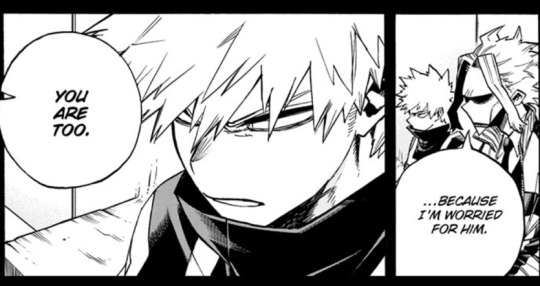

We see this growth in accepting that his previous beliefs were wrong. That he’s not alone and can safely be himself. And due to this acceptance of self he also allows himself to re-evaluate all his past actions through a different mindset.
Katsuki admitting certain aspects of himself is still a struggle. But he comes to a lot realization that he’s struggling to process. So, for him being worried isn’t just due to past mistakes. This isn’t just about making up for his actions. Katsuki is also attempting to return the hand Izuku always gave him.
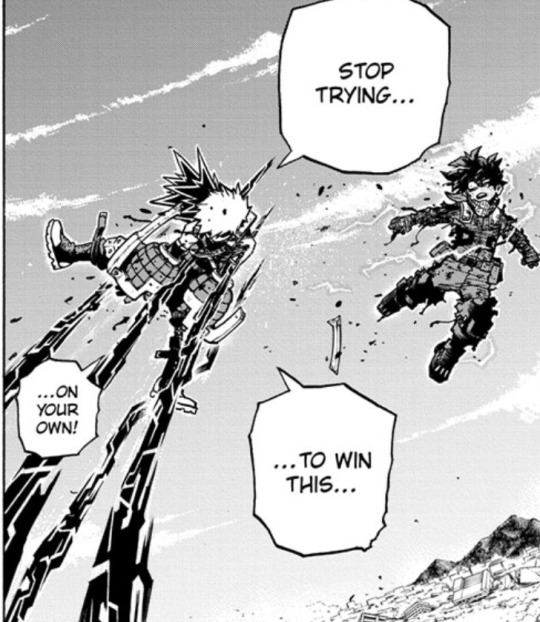
But Katsuki’s old habits still has him struggling with communicating verbally. Up until this point, his verbal breakdowns were all with intense self worthlessness being the focus. And when he experience a lost he does not know how to handle, is where the final wall of his belief system breaks down.
Where actions speaks louder than words. Katsuki always having to perform never thought about questioning this one simple yet impactful belief. So, to have Izuku just leave after Katsuki worked so hard to show that he’s doing better, it breaks him. For once he’s rejected by the one person who had never done so. To him this is a fail.
And the way Katsuki reacts to failure, time and time again, is a full panic attack. But this time he has nobody to blame for this failure. There’s no fingers to point, no one person to accuse. There’s not even a point of references on how he’ll be able recover from this failure.
But unlike the many times before, he does have better coping skills. He now has a different point of view on what is and isn’t possible. Yet, it takes some time for him to allow himself to process his emotions. Because the major skill he has learned to put into practice is acceptance.
He has to accept his failure. He has to accept the emotions that is washing over him. He has to accept the rejection that he feels. He has to accept every last ounce of thoughts and feelings for him to move forward. And when he’s done he is able to think clearly on what his next step is.
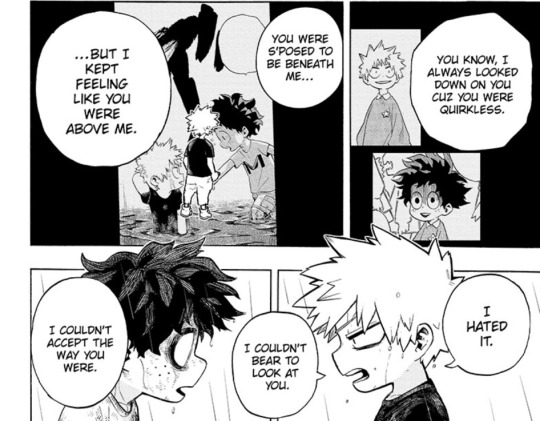


The next step is to vocally express his thoughts. Katsuki’s apology is much more than just stating that it was never Izuku’s fault. He’s apologizing for not accepting his own flaws. He’s apologizing for putting the blame on Izuku when that never should have happened. He’s apologizing for feeling so inferior that putting down someone else was all he could do.
The key component I took from this apology was that Katsuki is telling Izuku that it was never Izuku’s fault. That Katsuki blamed Izuku for something he never did. And when he states he doesn’t expect things to change, it has a double meaning.
Things between Katsuki and Izuku has long been changed, but I don’t believe Katsuki sees this. With how trapped he is struggling his belief system, he’s blind to what’s in front of him. So when he says “change” I took it as he’s referring to his dynamic with Izuku.
Katsuki’s and Izuku’s dynamic had long changed up until this point. But I don’t believe Katsuki is aware of this. Because of his internal struggles he seems to take information as symbolic, compared to Izuku. And because of self worth, he doesn’t believe that change is possible.
This apology also came off as a plea. Almost pleading Izuku return, if not for Katsuki than for everyone else. Katsuki insecurities doesn’t see him worthy to plea for himself. But he would do anything to that not fail again.
Which this all comes back to how Katsuki fully and whole accepts that the core belief of “perfection” is wrong. He accepts he isn’t this ideal and takes in all his flaws. Katsuki comes full circle back to the day Izuku reached out to him. That Katsuki is just another person and it’s ok to accept help.
——
Part 1 Part 2
——
That’s that. Next will be Izuku. If you think I missed anything please leave a comment.
#mha#bakugo katsuki#izuku midoriya#bnha bakugo katsuki#bnha bakugou#childhood#self accepectance#internal conflict#kacchan#psychoanalysis#character analysis#personal observations
16 notes
·
View notes
Text

updated: 2.9.24
Warnings: Main Character Death. AU: Canon divergent. Supernatural Themes. Violence. Trauma. Loss of Loved Ones. Internal Conflict. Identity Crisis. Redemption Journey. Dark Themes. Cult Activities. Supernatural Battles. Emotional Turmoil. Abusive Relationships. Toxic Dynamics. Demonic Heritage. Angelic Heritage. Perpetual Displacement. Psychological Distress. Mental Health Issues. Trauma. Supernatural Violence. Familial Conflict.

🌙 Name: Bianca Amara Moore
🔮 Age: 20
👤 Gender: Female
🌌 Fandom: Omniverse
🌟 Ship: Bianca x Sesshomaru
📅 Date of Birth: October 1st, 1976
👼 Mother: Seraphine
👩 Surrogate Mother: Sarah Moore
👹 Father: Azrakiel (Asmodeus / Ragnar)
👨 Surrogate Father: David Moore
🎭 Faceclaim: Monica Bellucci (blonde)
About Bianca: Bianca's life is a tapestry woven with threads of celestial grace and demonic power. Born from the forbidden union of an archangel and a demon to end the Omniverse, her journey is marked by tragedy, love, and the pursuit of redemption but her pursuit will lead to her ultimate downfall.
Character Overview
🌟 Bianca's Persona: Bianca radiates warmth, compassion, and unwavering strength. Despite the turmoil of her past, she carries herself with grace and resilience, navigating the complexities of her dual heritage with courage and determination.
🎭 Eloquent Personality: Bianca's past shapes her actions and decisions, driving her towards redemption and healing. She grapples with guilt, grief, and the burden of her lineage, but her inner strength and unwavering compassion guide her through the darkest of trials.
🌸 Unwavering Compassion: Bianca forms deep connections with those she encounters on her journey. Her relationships are forged in trust, loyalty, and empathy, offering solace and support to those in need.
💑 Transcendent Bond: Bianca's bond with Sesshomaru transcends time and space, rooted in mutual respect, love, and sacrifice. Their union is a testament to the power of love in the face of adversity, driving them to protect each other at all costs.
⚔️ Courage in Conflict: Bianca's bravery shines in moments of conflict and adversity. She faces darkness with unwavering resolve, wielding her inner strength and celestial powers to protect the ones she loves.
✨ Likes & Dislikes
Likes: Art, Nature, Music, Tea, Travel, Cultural Exchanges
Dislikes: Injustice, Oppression, Betrayal, Selfishness
🌿 A Soul of Many Hobbies: Bianca finds solace in celestial stargazing, drawing, meditation, and nature walks. Her diverse interests reflect her curiosity and appreciation for the world around her.
Power and Abilities:
💫 Powers and Abilities: Bianca possesses a diverse array of supernatural powers and magical abilities, reflecting her celestial and infernal heritage. Through Celestial Harmony, she taps into her mother's lineage, exhibiting powers such as Celestial Empathy, Cryomancy Sorcery, and Temporal Manipulation. From her father's infernal lineage, Bianca wields Dark Sorcery, Illusory Mastery, and Charismatic Manipulation. Her Succubi's Seduction abilities grant her enchanting allure, emotional manipulation, and dreamwalking prowess. Additionally, Bianca's Toymaker's Touch allows her to craft cursed artifacts and manipulate reality. In combat, her Sword Abilities, including Temporal Sundering and Sword Judgment, showcase her mastery of time and combat prowess.
💔 Weaknesses: Despite her formidable powers, Bianca faces several vulnerabilities and limitations. Her dependence on emotional feed for sustenance leaves her vulnerable to energy drain and emotional instability. Bianca's susceptibility to celestial and infernal influences, along with her reliance on environmental factors, makes her vulnerable to cosmic interference and environmental hazards. Furthermore, her emotional vulnerabilities, lack of experience in swordsmanship, and limited defensive options render her susceptible to manipulation and physical harm in combat. Bianca's true dragon form, while powerful, comes with limitations such as energy consumption, size, and maneuverability constraints, as well as vulnerability to anti-dragon measures.
Key Moments in Bianca's Journey:
🌠 Birth from the union of Seraphine and Azrakiel.
🌠 Tragic loss of her surrogate mother, Sarah Moore, to Azrakiel's cult.
🌠 Meeting and forming a deep bond with Sesshomaru.
🌠 Transported to the ‘Feudal Age’, facing unknown challenges.
🌠 Transformation and training to confront Azrakiel and Naraku.
🌠 Transported to 'the Planet' from Final Fantasy 7, facing unknown challenges.
Themes:
Redemption, Identity and Heritage, Love and Sacrifice, Good vs. Evil, Inner Conflict and Growth, Resilience and Hope, Destiny and Fate, Forgiveness, Trust and Betrayal, Society and Acceptance, Legacy and Heritage, Transformation and Growth.
#Inuyasha #Final Fantasy 7 #FantasyWorldCollide #FWC #oc: Bianca Moore - Inuyasha

#writeblr fanfiction#oc: bianca moore - inuyasha#character: sesshomaru#sesshomaru#sesshomaru x oc#inuyasha#inuyasha oc#fd: inuyasha#long post#main character death#au: canon divergent#supernatural themes#violence#trauma#loss of loved ones#internal conflict#identity crisis.#redemption journey#dark themes#cult activities#toxic dynamics#demonic heritage#angelic heritage#perpetual displacement#psychological distress#mental health issues#familial conflict#angst#tw: gif#FWC: Character
9 notes
·
View notes
Text
i’ve been doing some more introspection on my past experiences and i think it’s possible that i might have been plural, or my plurality might have been foreshadowed, for at least a few years.
for probably a few years now if i had to guess? i’ve just always had these Super vivid conversations with myself, as if there was someone else or as if i was two people at once. we would have banter and joking arguments but they would also be there during more serious times. i was looking at osdd symptoms out of curiosity, one of which is “talking to yourself” (loosely quoted) and it really made me think yk
i really only have a couple anecdotal stories, especially since our dissociative amnesia is so severe right now (a lot of which is my doing and i’m trying to own up to it), but looking back on them it’s like. Huh.
there was this one time i was jokingly arguing with “me” and they called me a “baka” and i was SO offended that i put it as my discord bio and stuff as “DID I JUST GET CALLED A BAKA” lmao 💀 but looking back on that like. i don’t think most people get that (jokingly) offended at their own words 😭
(tw prosecutors, ab*sers, dissociation, splitting, switches, existentialism/existential fear?)
there was also this one really vague time that i was having a breakdown and getting help from a friend for it, and i was talking about myself in the third person. i also remember kind of talking with the attributes of someone who traumatized me, and considering our last prosecutor was an introject of her… i don’t know. for a long time part of my internal monologue has taken on her voice so it’s possible that that was just an aspect of me that separated itself further off in our recent split
even with the first “real switches” after the split, it was terrifying because anything other than our single identity was out of the question, but it could explain why we only identify as plural now if we have been for a long time, because any switches would have been missed because it was so out of the question. hell even dissociation ITSELF was out of the question because we had no idea what we were doing “counted” as it
my point being um uhhhh,., i’m not really too sure 😭 but i’m trying to keep an open mind and not jump to conclusions too quickly. it is really helpful looking back on the past though :3
ANYWAYS we’re all getting along well! we’re starting to be on better terms with each other and have banter and it really reminded me of this. rant over, feel free to let us know if you guys have any similar experiences!
-🎀
#&🎀#pluralgang#actually plural#endo friendly#endo safe#median system#mediple system#plural community#actually median#plural culture#plural positivity#plural memes#tw abuse mention#internal conflict#system positivity
9 notes
·
View notes
Text
Writing Tip - Prioritise Internal Conflict
While external conflict will be things like the overall plot or antagonists showing up or things like that, internal conflict will be your character struggling with their flaws, emotions, things where the threat or problem is coming from themself and not some outside force
Good characters can carry a bland plot, but a good plot can’t carry bland characters - they’re the emotional hook of the story, so we need to be invested in them. This is why we need strong internal conflict; to feel like the characters matter to the story and aren’t just interchangeable NPCs. Even if the message of the story is that anyone could be the hero and that there doesn’t have to be anything innately special about you in order for you to be the hero, we still need to care about the hero outside of their heroics
If you have to choose between adding to the plot and adding to the characters, choose the characters
#conflict#writing conflict#internal conflict#external conflict#writing#writers#writeblr#bookblr#book#writers on tumblr#writerscommunity#how to write#on writing#creative writing#write#writer#writers and poets#writblr#female writers#writer things#writerscreed#writing advice#writing life#original writing#writing is hard#writers of tumblr#writer problems
26 notes
·
View notes
Text

16 notes
·
View notes
